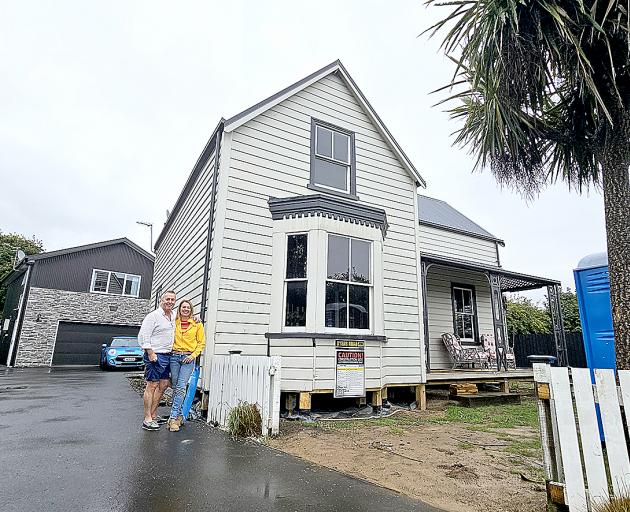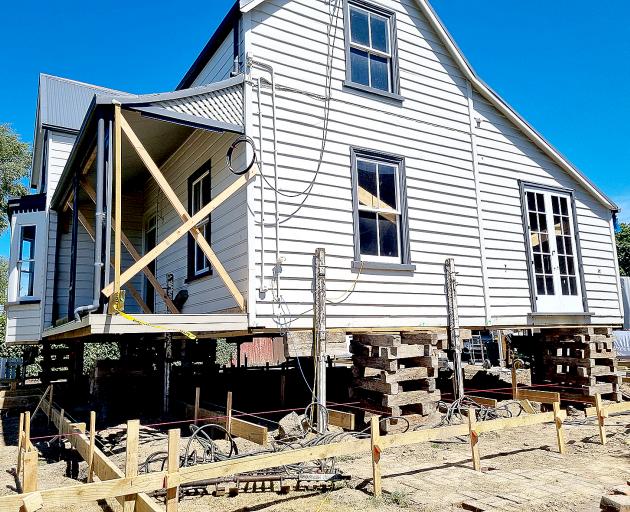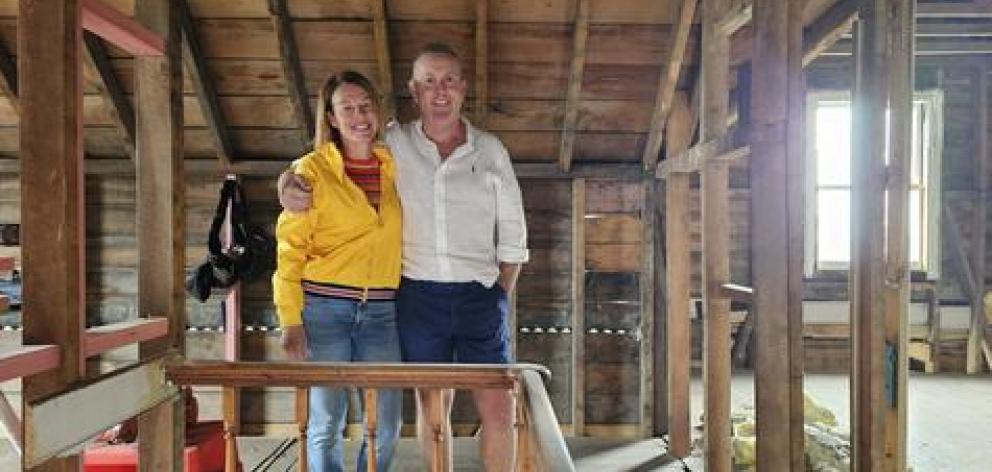
When John and Wendy Hillary first walked past the 1864 home on Tosswill Rd, they immediately fell in love with it.
Now 10 years on, they have stripped the home back to its skin and bones to rebuild it into a modern classic.
The couple left Skipton, North Yorkshire, in England and arrived in Christchurch in 2011.
They had always liked New Zealand and, when looking to move, they were trying to decide whether to settle in Napier or Christchurch.
“It was on a whim really,” John said.
“We chose Christchurch because it was more populated.”
When John and Wendy arrived in October, they were greeted by a city in ruins after the February 22, 2011, earthquake.

For the first few months, they were living in a caravan at the South Brighton Holiday Park.
“It was like we were in a warzone – there were still soldiers on the streets,” Wendy said.
John got a job with Fletcher Building as a project manager assisting with the rebuilds of damaged homes.
Wendy got a job in the Koru Lounge with Air New Zealand, and later as a flight attendant.
After living in several rental properties in Christchurch, the couple purchased their Prebbleton house in 2014.
While they loved the home’s English style, as downside was its lack of insulation.
“It was freezing. The electric bill was unbelievable,” John said.
Said Wendy: “We were just heating the street because it was just going out the windows and out of the walls. If the wind was blowing you could see the curtains lifting.”

They were not able to sell the home but, looking back, John said they were glad they didn’t.
While in Wellington they rented out the home, returning in 2021.
“When we came back we thought we’d do a renovation so we started removing all the linings and realised there was a really badly damaged chimney so I got in touch with EQC (now NHC) and it turned out it was earthquake damage that was missed.”
The couple tried to apply for the on-sold programme which would help pay for the repairs which had been missed, but after about three years of trying for approval, they decided to go it alone.
“We were left with an uninsurable property and did not have many options so we decided to throw our life savings behind it,” John said.
Complicating matters further in 2019, the house was listed as a heritage building which added further red tape to the building consent process.
But at the end of last year, they got the required consent and began by raising the house to replace the original stone foundations with modern timber and concrete piles, raising the floor level by about 30cm.
Wendy said in high winds you could feel the house move around on its old foundations.
“The house feels so good compared to what was.”

With the house now on its new foundations, work has started on removing walls to make the downstairs kitchen, living and dining space more open plan, as well as adding new treated timber framing.
Insulation will be added to the walls, floor and roof, and double glazing retrofitted to the original window frames.
While the exterior will be kept the same, the interior will be a mix of modern and heritage features.
John said they plan to keep the doors, the stairs, the balustrade, and the sash windows.
Part of the renovation includes rebuilding a lean-to, which was too damaged to be saved.

A builder and stonemason by trade, John can help with some of the work, but without a New Zealand certificate, he is leaving most of the work to others.

Blyth House
- Scottish immigrant James Blyth was the first owner of the Tosswill Rd home which became known as Blyth House.
- Blyth opened the first blacksmith in Prebbleton in June 1864, located northwest of his home.
- By April 1871 it was reported Blyth employed about 12 men and had earned district-wide distinction for the ploughs he made.
- The house passed through a number of hands after 1878, including those of Messrs Anderson (1879-1912), Bennett (1912-19) and Chappell (1919-42).
Prebbleton’s origins
The Prebble family, who emigrated from Kent in England, are responsible for Prebbleton's origins.
James and Ann Prebble arrived in New Zealand in 1840 with five of James’ children from his first marriage and an infant son born during the voyage.
In 1852, James’ son William began using 5000 acres of vacant land near what would become Prebbleton.
In 1855, James’ younger brother Edward bought 50 acres nearby, which he subdivided and sold off.
In 1862, William sold his land to J.I. Tosswill, who officially named the area Prebbleton.
The Prebble family was actively involved in the development of the township, including helping to build the first church, All Saints, and donating a stained glass window.
- Prebbleton’s Māori name – Taumata Kuri – comes from one of the descendants of Te Ruahikihiki, Kuwhare, who travelled north from Taumutu towards Kaiapoi. He carried supplies to trade and knowledge to share. Kuwhare stopped to rest at Taumata Kuri. Taumata refers to a resting place, while Kuri refers to the Kurikuri grass in the area.











